Confirmed speakers

|
Prof. Martin Ackermann Eidgenossische Technische Hochschule, Zurich, Switzerland Using experimental evolution to study such crucial phenomena like phenotypic noise (the variation in a population) or aging are the research interests of Prof. Martin Ackermann. In 2006 he became Swiss National Foundation Professor and in 2008 became Associate Professor at the ETH Zurich. |

|
Dr. Peer Bork European Molecular Biology Laboratory, Heidelberg, Germany Using computational biology and systems biology to predict function, is the main focus of Peer Borks research. Bridging across different scales and connecting the genotype and phenotype is the goal of Peer Bork. Being able to predict drug-targets by using side-effect similarities was one of the recent achievement of this novel approach. He is a senior group leader at EMBL since 2001. |

|
Dr. John Briggs European Molecular Biology Laboratory, Heidelberg, Germany His lab aims to understand the interplay between protein assemblies and membrane shape. How do proteins induce the distortion of cellular membranes into vesicles of different dimensions? How do viruses hijack cellular systems for their own use? What is the role and arrangement of the cytoskeleton during membrane distortions? How does the curvature of a membrane influence its interaction with particular proteins? John Briggs develops and applies microscopy and image processing approaches to such questions. He is group leader at EMBL since 2006. |
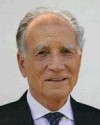
|
Prof. Pierre Chambon Institut de Genetique et de Biologie Moleculaire et Cellulaire, Illkirch, France Founder of the Institut de Genetique et de Biologie Moleculaire et Cellulaire (IGBMC) he was one of the first to demonstrate the existence of the splicing of messenger RNA. He also worked intensively on nuclear receptors and discovered (together with Ronald M. Evans) the nuclear hormone receptor for retinoic acid. His work revolutionized the field of endocrinology and gene expression and opened the door for many important drug discoveries. For this he received the Albert Lasker Award for Basic Medical Research in 2004. |

|
Prof. Ivan Dikic Goethe University Medical School, Frankfurt, Germany Unraveling the system how cells degrade proteins, Prof. Ivan Dikic discovered one year ago the long missing receptor at the proteasome that facilitates this process. He has also described receptors for selective autophagy that target proteins aggregates or damaged organelles like mitochondria. This has many long-ranging implications into many diseases like Alzheimer's, Parkinson or cancer. The Croatian scientist was elected EMBO member in 2004 and received the Award of American Association for Cancer Research for Outstanding achievements (2006). He is currently Director of the Frankfurt Institute for Molecular Life Sciences (FMLS). |
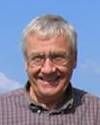
|
Prof. Witold Filipowicz Friedrich Miescher Institute for Biomedical Research, Basel, Switzerland Working over two decades on non-coding RNAs, he is now at the forefront of elucidating the mechanisms involved in RNA interference. Using Biochemical methods, he has played an important part in characterizing the proteins involved in this novel mechanism of gene regulation. |
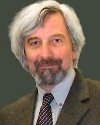
|
Dr. Maximilian Haider Corrected Electron Optical Systems GmbH, Heidelberg, Germany Progresses made in technologies are pushing forward research in biology. Cs- and Cc/Cs-Correctors are prime examples of outstanding innovations allowing new insight in biology. Thanks to his discoveries on these correctors at EMBL first and now within his company CEOS, Dr. Haider recently reached a 0.05nm resolution in both TEM and STEM imaging, leading Electron Microscopy to new frontiers. |

|
Prof. Dr. Ari Helenius Eidgenossische Technische Hochschule, Zurich, Switzerland Prof. Ari Helenius has studied the cell biology of virus entry during his extended career. He discovered different mechanisms how viruses can enter human cells and how the cell is tricked by the pathogen. Furthermore he worked on the cell biological quality control for newly synthesized proteins. For his achievements he received in 2007 the Marcel Benoist prize, the highest research award in Switzerland. |

|
Prof. Dr. Stefan W. Hell Max Planck Institute for Biophysical Chemistry, Göttingen, Germany By inventing the renowned STED technique, Prof. Dr. Stefan Hell proved both theoretically and experimentally that it is able to go beyond the resolution limit imposed by diffraction with standard confocal and light microscopy. Among many other awards, he received in 2006 the German Innovation Award from the Federal President. |
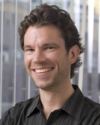
|
Dr. Konrad Hochedlinger Division of Medical Sciences, Harvard University, Boston, USA Dr. Konrad Hochedlinger is working in the promising field of stem cells. He and his team succeeded in generating stem cells without using embryos, but with reprogramming skin cells in the mouse model system. Only 33 years old, and already a group leader at Harvard, he is a very promising young scientist. |

|
Prof. Axel Meyer Laboratory for Zoology and Evolutionary Biology, Department of Biology, University of Konstanz, Germany Prof. Meyer is a well-established evolutionary biologist. Specifically, he is interested in the evolution of biodiversity. He is trying to understand the genesis of genomic, developmental and morphological diversity as well as their evolutionary interconnections. Furthermore, in his work as scientific consultant he is also an active science columnist for the German "Handelsblatt" magazine. |

|
Prof. Kim Nasmyth Department of Biochemistry, University of Oxford, United Kingdom Adressing essential questions about cell division and correct chromosome segregation, Prof. Nasmyth characterized the anaphase promoting complex, the cohesin complex, as well as the proteolytic mechanism that breaks up sister chromatid cohesion at the onset of mitosis. His work has been recognized by several awards including the Boveri award for Molecular Cancer Genetics, the Croonian lecture/Medal of the Royal Society, the Austrian Wittgenstein prize, and the Louis Jeantet prize for Medicine. |
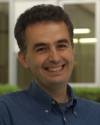
|
Prof. Dr. Manolis Pasparakis Institute for Genetics, University of Cologne, Germany Working on the NF-KB pathway which is important in autoimmune diseases such as Crohns disease, Prof. Dr. Manolis Pasparakis has found important signaling molecules involved in this disease. |
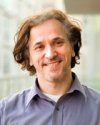
|
Dr Josef Penninger Institute of Molecular Biotechnology of the Austrian Academy of Sciences (IMBA), Vienna, Austria Using gene-targeted mice his group is attempting to model human disease and to genetically dissect disease mechanisms. Using this approach Prof. Josef Penninger and co-workers were recently able to provide important insights into the pathogenesis of diabetes and acute lung injury (ALI) caused by SARS-coronavirus or H5N1 avian influenza virus. His work was honoured by several awards including the Austrian Scientist of the Year Award, the Ernst Jung Prize for Medicine and the International Research Prize in Bone Research. |
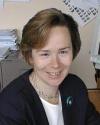
|
Prof. Sheena Radford Institute of Molecular and Cellular Biology, University of Leeds, United Kingdom We still do not understand how misfolding of proteins leads to diseases like Alzheimer or Creutzfeld-Jakob disease. Prof. Sheena Radford is analyzing the molecular mechanisms leading to folding and misfolding and disease. |

|
Prof. Luis Serrano Center for Genomic Regulation, Barcelona, Spain Prof. Luis Serrano is one of the pioneers in the fields of systems and synthetic biology. His group works on the understanding and engineering of complex systems, from single proteins to whole cells. Group leader at EMBL from 1992 to 2001 and Head of Structural & Computational Biology Programme from 2001 to 2006, he is currently Director of the EMBL/CRG Research Unit in Systems Biology (Barcelona). |
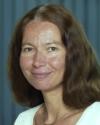
|
Dr. Beata Vertessy Hungarian Academy of Sciences, Budapest, Hungary Studying DNA repair enzymes using biochemistry, structural biology and cell biology, she is unraveling the function that Uracil plays in DNA. Among other awards she already received the HHMI Research Scholar Award for the second time. |
This list will be updated as soon as next confirmed speakers will be known.




